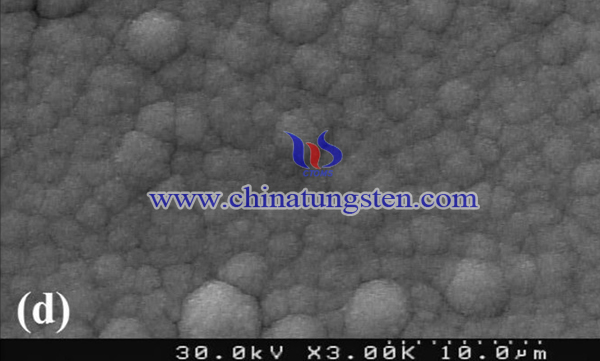Fabrication Method of Nanosized Tungsten Trioxide for Gas Sensing Applications
- Details
- Category: Tungsten Information
- Published on Wednesday, 28 July 2021 01:13
Air quality monitoring and toxic gas emissions had risen to be a global concern in the past decades. Researchers have been trying various and massive strategies to find an effective gas sensor and its synthesis methods in this field. A practical gas sensor should detect a particular gas among a mixture of gases and continuously monitor an atmosphere. There are many types of gas sensors depend on different classification methods.

Among the various materials, semiconductor metal oxides have caught much interest due to their inexpensiveness and outstanding properties, such as chemical resistance, endurance, and time stability. N-type semiconductor metal oxides often used for gas sensing such as SnO2, ZnO, TiO2, V2O4, In2O3 or WO3, present different morphologies depending on the synthesis technique employed. Specifically, tungsten trioxide (WO3) has been considered a promising material for gas sensing applications. WO3 presents a band gap of 2.6 eV and can be tailored in different nanostructures depending on the growth methodology. The thin film deposition techniques and the corresponding deposition parameters of WO3 have significant impacts on the gas sensing properties of the film gas sensor.

Recently, a synthesis method of nanosized tungsten trioxide for sensing applications has been reported. Hydrogen sulfide (H2S) has been selected as the target gas because it is frequently used in research laboratories and industries. Fabrication procedures of tungsten trioxide thin films gas sensors are as following steps:
Firstly, the platinum inter-digitated electrodes were deposited using a shadow mask via electron beam evaporator technique on alumina substrates which were subjected to a calcination temperature at 700 °C for four h. Alumina substrates with an area of about one × 1 cm2 were sonicated and washed using acetone, methanol, and isopropanol alcohol, respectively. Then, substrates were placed into a horizontal quartz tube for evaporation and oxidation in the air using another shadow mask. A thermocouple was placed near the tungsten plate to control the growth temperature and film formation process. After oxidation of tungsten plates, the samples were moderately cooled down to room temperature using an oven to avoid the possible thermal shocks and achieve crack-free tungsten trioxide thin films. Then, black thin layers of WO3 were deposited on the surface of the substrates at 600∘C for 2 h.
In summary, nanosized tungsten trioxide had been successfully utilized in gas sensing applications. The results showed that the highest sensitivity for the H2S is at an operating temperature of 100 °C, annealed at 600 °C, and 80 ppm of hydrogen sulfide. The result showed WO3 thin films where the grain boundaries were more visible, the cluster size increased, and the structure was gradually converted to a compact structure upon rising the growth temperature.
- Tungsten Oxide Manufacturer & Supplier, Chinatungsten Online: www.tungsten-oxide.com
- Tungsten News & Prices of China Tungsten Industry Association: www.ctia.com.cn
- Molybdenum News & Price: news.molybdenum.com.cn
- Tel.: 86 592 5129696; Fax: 86 592 5129797; Email: sales@chinatungsten.com



 sales@chinatungsten.com
sales@chinatungsten.com